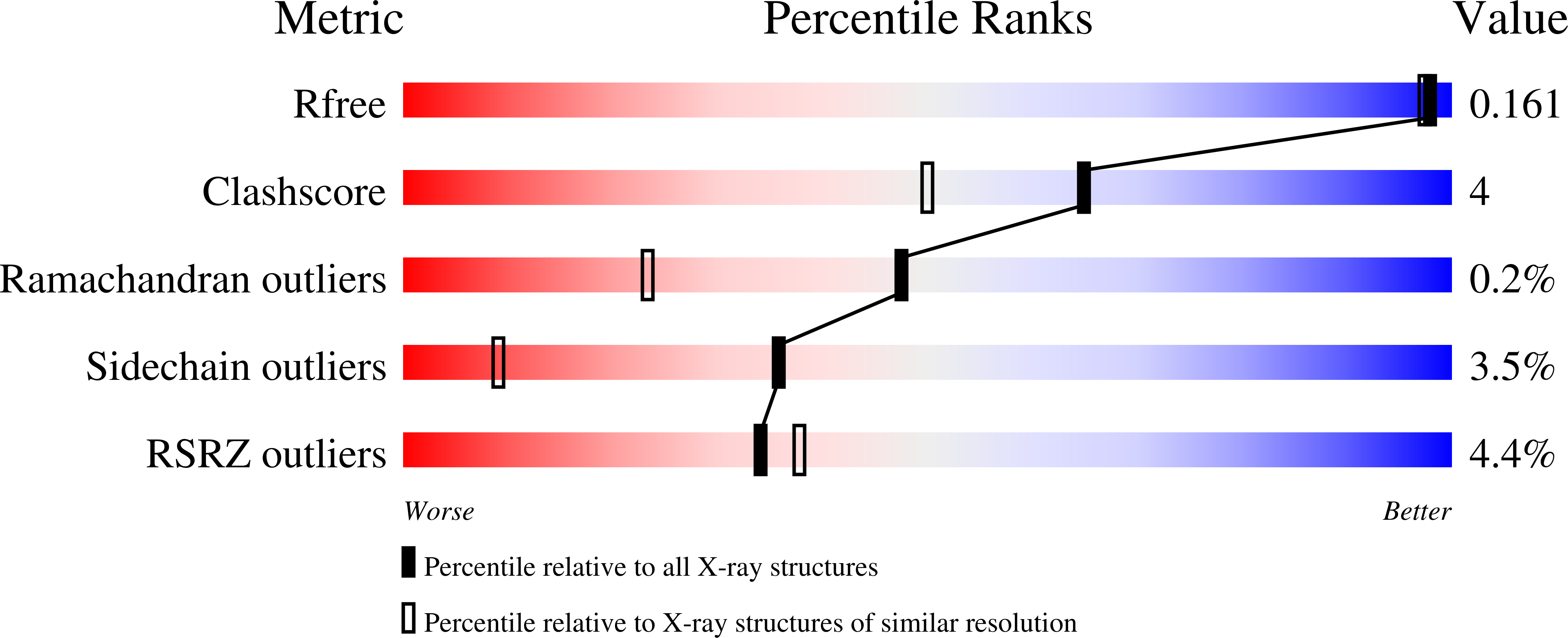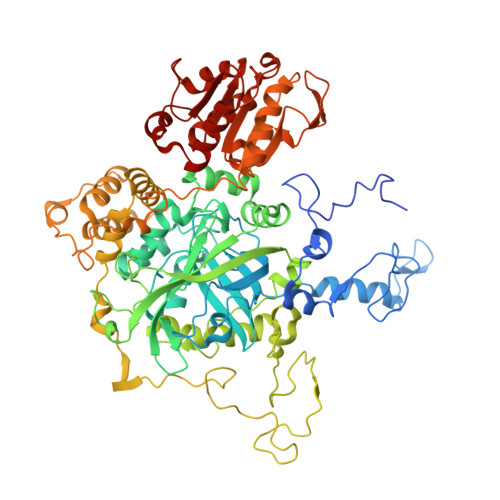Influence of main channel structure on H(2)O(2) access to the heme cavity of catalase KatE of Escherichia coli.
Jha, V., Chelikani, P., Carpena, X., Fita, I., Loewen, P.C.(2012) Arch Biochem Biophys 526: 54-59
- PubMed: 22820098
- DOI: https://doi.org/10.1016/j.abb.2012.06.010
- Primary Citation of Related Structures:
4ENP, 4ENQ, 4ENR, 4ENS, 4ENT, 4ENU, 4ENV, 4ENW - PubMed Abstract:
The main channel for H(2)O(2) access to the heme cavity in large subunit catalases is twice as long as in small subunit catalases and is divided into two distinct parts. Like small subunit catalases, the 15Å of the channel adjacent to the heme has a predominantly hydrophobic surface with only weak water occupancy, but the next 15Å extending to the protein surface is hydrophilic and contains a complex water matrix in multiple passages. At the approximate junction of these two sections are a conserved serine and glutamate that are hydrogen bonded and associated with H(2)O(2) in inactive variants. Mutation of these residues changed the dimensions of the channel, both enlarging and constricting it, and also changed the solvent occupancy in the hydrophobic, inner section of the main channel. Despite these structural changes and the prominent location of the residues in the channel, the variants exhibited less than a 2-fold change in the k(cat) and apparent K(M) kinetic constants. These results reflect the importance of the complex multi-passage structure of the main channel. Surprisingly, mutation of either the serine or glutamate to an aliphatic side chain interfered with heme oxidation to heme d.
Organizational Affiliation:
Department of Microbiology, University of Manitoba, Winnipeg, MB, Canada.















